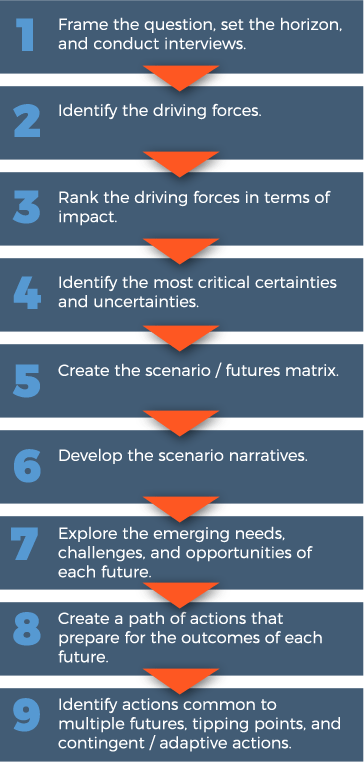
What Is Scenario Planning?
Scenario Planning is a strategic-planning approach often used by forward-looking organizations to assess the shifting uncertainties in their changing planning environments. These uncertainties and their possible future outcomes could promote or inhibit the future ability of organizations to provide services that meet stakeholder expectations.
The Scenario Planning approach I most often employ is a multi-step process designed to define the range of future uncertainty by generating multiple possible scenario futures. Each scenario credibly describes a longer-term future-planning environment that reflects a unique combination of uncertain outcomes and conditions. These scenario futures are evaluated both individually and collectively to develop flexible, strategic action plans that are applied in the near and mid terms.
Even though Scenario Planning generates longer-term scenario futures to conduct strategic assessments, the main objective is not to plan for the long term—a time that may be several decades out depending on the organization’s mission. The primary motivation to apply Scenario Planning is much more practical and immediate. Scenario futures are developed to establish a longer-term planning context in order to put in place an implementable, action-based plan in the near and mid terms—usually over the next five to 10 years.
Given the forward-looking nature of the process and periodic planning updates, an evolving strategic action plan will continue to be compatible with a diverse set of plausible future planning environments that could emerge over time. A scenario-based strategic action plan can operatively enhance an organization’s adaptive flexibility and its preparedness for whatever future lies ahead.
Read More>> How does Scenario Planning differ from more traditional approaches?
Read More>> Who can benefit from Scenario Planning?
Read More>> Presentations introducing the rationale and process.
Read More>> Case study summaries that illustrate the method in action.


